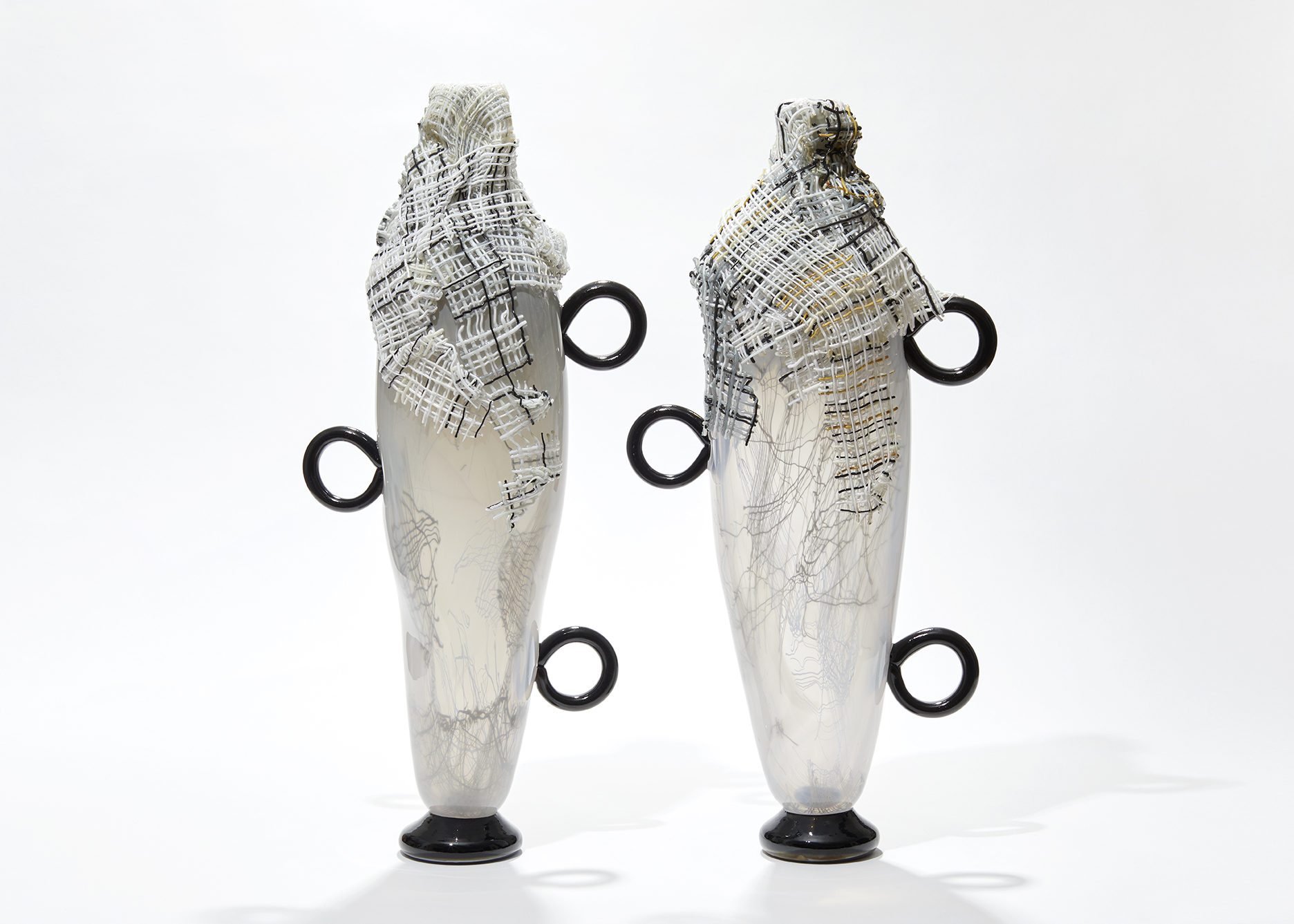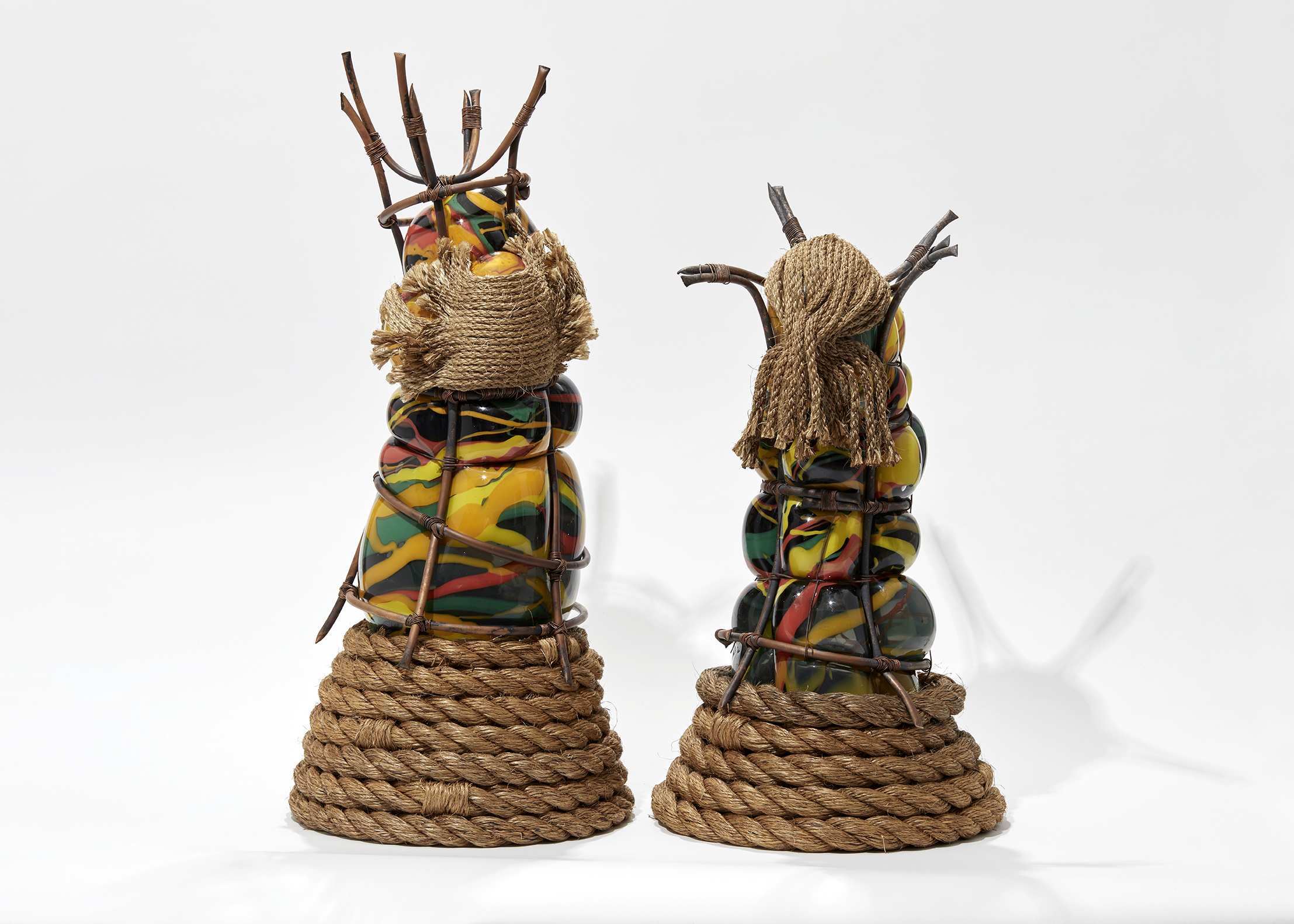Not Black or White | 24th February to 17th March 2023 @ SoShiro
13th February 2023

Not Black or White | A colourful new exhibition at SoShiro Gallery London
Presented in collaboration with Art & Exception (@artexception), Undiscovered Canvas (@undiscovered_canvas) and Vessel Gallery (@vessellondon)
SoShiro Gallery, 23 Welbeck Street, London W1G8DZ
24th February to 17th March 2023 | Tuesday to Saturday: 10 am to 6 pm
The Exhibition is free to attend.
Set within the SoShiro Gallery townhouse in Marylebone, Vessel Gallery proudly collaborates for Not Black or White, which brings together a collective of artists who have reimagined the traditional use of colour, material, nature, and culture. They are visual storytellers who have looked to their heritage, the natural environment and personal narratives to activate their remarkable skills and creativity. There is a sense of raw storytelling and palpable emotion that can be felt in every piece created.
On show will be paintings, textiles, sculptures and design pieces in glass, metal, and wood – a total of over 60 works created in London, South Africa, Burkina Faso, the Ivory Coast, and other African countries - including artworks by Vessel Gallery's artists, Cathryn Shilling and Chris Day.
The show will run alongside a lively program of performances, talks and salons featuring some of the artists for a dynamic shared experience of the show.
"Not Black or White is a show that brings together artists and craftsmanship of courage and thoughtfulness. The works on show are a testament to the many global, community and individual human aspects that need to be learnt, supported, and celebrated.
The show demonstrates the power of contemporary art taking on the challenge and doing its part to help us visualise different and endless colours, making us more aware of the world we live in, the injustices that exist, the need for the love we give, and the need to preserve our heritage and the stunning natural environment that surrounds us - to realise that it’s all in the colours.”
Kenyan-born Shiro Muchiri, SoShiro Gallery owner
Left: Only Hope Remains I | Right: Only Hope Remains II | Unique artworks by Cathryn Shilling

Only Hope Remains by Cathryn Shilling
The phrase 'to open Pandora's box' has become synonymous with human downfall, the point of no return, where inexplicable troubles are unleashed. However, its origins are rooted within Ancient Greek mythology, where instead of a box, it was an entirely different receptacle that was employed to contain all evils.
"The story of Pandora was first written about by the Ancient Greek poet Hesiod who was active between 750 and 650 BC, about the same time as Homer. In his version, Pandora comes with a type of jar, or Pithos in Ancient Greek. This would have been a tall ceramic storage vessel, up to about 3 foot tall, with a lid. These were used to store oil or wine. So not a box, or Pyxis in Ancient Greek. The idea of the box is actually due to a mistranslation by Erasmus in the 1600’s.
So according to Hesiod, the Titan Prometheus stole fire from the gods of Mount Olympus and gave it as a gift to humans. This so angered Zeus, the king of the gods that he decided to punish men by giving them the gift of evil to compensate for the improvement in their lives that fire brought. Zeus ordered that the first woman be moulded from the earth to create a ‘beautiful evil’ whose deadly descendants would torment the race of men. She was called Pandora, or All Gift, and with her came a jar which contained ‘countless plagues’ gifted to men by all the gods of Olympus. Prometheus was subjected to a hideous punishment, but he managed to warn his brother Epithemius not to accept any gifts from Zeus. However, Epithemius didn’t listen and accepted the gift of Pandora anyway.
Men had been living carefree lives until Pandora lifted the lid of the jar and released all evils upon them. But to me the most depressing part of the story is that the jar had also contained ‘Hope’ but this was left inside, caught under the lip of the jar." Cathryn Shilling
Left: Colour-Blind The King | Right: Colour-Blind The Queen | Unique artworks by Chris Day

Colour-Blind by Chris Day
In direct response to the invitation to create new works for the poignantly titled exhibition ‘Not Black or White’ taking place at SoShiro, Chris Day has taken a brave new direction. Despite commencing his practice later in life, in a short but intensely productive time, Day has made his mark. In many ways he has made up for lost time, harnessing his unparalleled drive to not only make but to stimulate discourse with others, with what is often seen as challenging subject matter. A fearless yet gentle orator of other’s true tales, often involving unfathomable racism, cruelty & torture, Day has become emboldened, finding the ability to open up and speak about his own difficult past.
Born in 1968 and growing up in Britain, Chris Day was made to feel out of place and voiceless, being a child of an ‘unjustly disapproved of union’, that resulted in racism he had to endure from early childhood. Several decades later and involving extensive (continuing) research in to the countless lost lives, that to date have informed his artworks, these lost voices have now in turn given back emotional strength and fortitude, encouraging Day to raise his own voice, to tell his own story and most importantly, to begin to overcome and let go, his many internalised traumas. With work of such a powerful personal nature, it is of course, best told in the words of the artist;
“The work I produce is intended to capture the audience’s attention and get them to dip their toe in the sometimes-dangerous waters of dialog. As a story teller I try to give offer a safe place where discussions regarding racism can be open and not judged. Creating work that is very emotional, raw and a part of my heritage is not only engaging in a conversation with the viewer but also my own kind of therapy to release what’s built up inside over the years. ‘Colour Blind’ has given me the opportunity and the confidence to share my own story and unleash the skeletons with in the cupboard.
In 1967 Supreme Courts of the United States ruled that it was no longer a criminal offence for the intermarriage of black and white people, one year later I was born. The stigma and hostility associated with being in a mixed relationship in the UK and the United States in the 60s wasn’t for the faint hearted, while the children of these relationships throughout history have had to endure society’s ignorance and disapproval.
The saddest part of my story is that my parents did not have the strength required to stand up against social pressures of that period of time, and society won. The stigma and shame growing up with no father figure is not my story alone and hope this work will encourage others to tell their stories. His absence is clear to see, like a jigsaw, there’s a piece missing, although DNA technology has enabled me to fill in some parts of the puzzle. This work is an insight to my Nigerian heritage and the struggle I have had to overcome to be able to talk about my past and finally dismiss the skeletons.
The work comprises of many layers representing a DNA strand providing clues to the past. The base is from Sapele timber produced predominantly from West Africa and can be found in my ancestral home of Nigeria. The tree image is symbolic for genealogy & strength and although in this work it’s not seen, it is integral to the whole piece. As property, Africans were branded to show whom they belonged to when sold into slavery. The wood has been branded with my initials to honour their memory and a bond to the people to whom I belong. Attached to the wooden base are coils of rope produced from the Jute plant which are also commonly grown in Africa and Asia. These individual strands and fibres on their own are weak but together create a strong bond. Unfortunately, this same rope was used to place millions of Africans into bondage, creating a bind that was unbreakable. The copper cages are extremely complex resembling a DNA helix albeit deformed, as well as referencing elements of African body jewellery, taking on human characteristics. Confined to its cage the glass pushes against its guardian while at the same time being engulfed with a cloak of colour protecting and covering its vulnerability.” Chris Day
SoShiro Gallery
Founded by designer and creative director, Shiro Muchiri, SoShiro is a collaborative platform, consultancy, event space and shop that nurtures, celebrates and communicates our artistic and cultural diversity. It is their mission to bring the richness of the world’s art, design and craft into the popular imagination in a way that is exciting, relevant and mutually beneficial to all. The SoShiro Space is in the heart of London’s Marylebone. This five-storey townhouse hosts SoShiro Collections, guest exhibitions, regular shows and private events.


